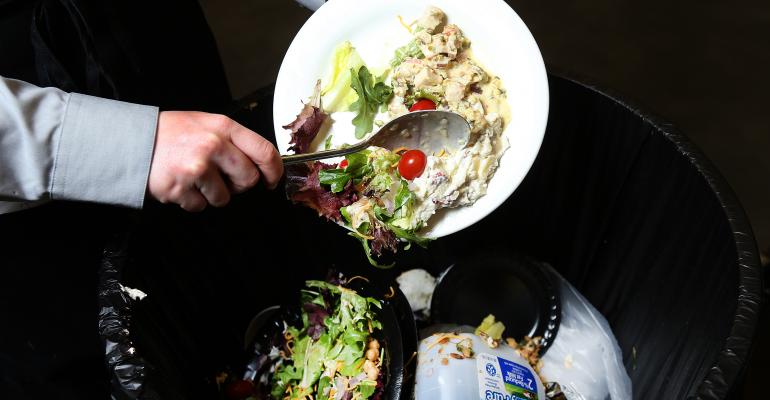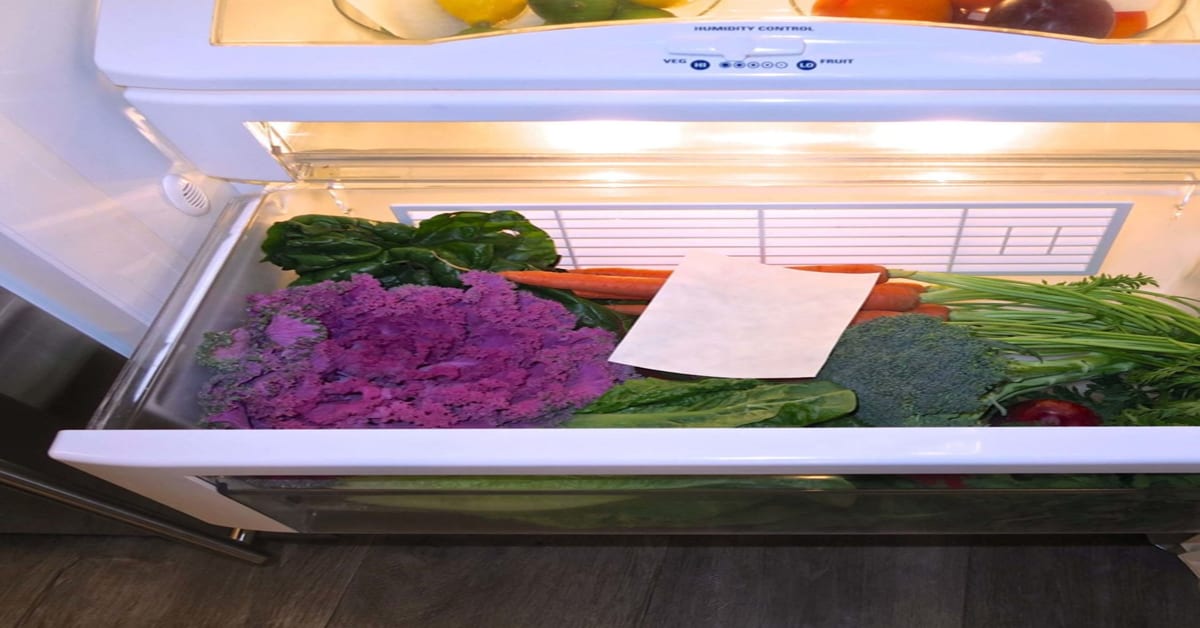When it comes to food safety, you shouldn’t compromise. Learn here how to prepare, cook and store food safely. Mishandling food in any part of the process will dilute its value and eventually lead to food waste, one of the most disgusting type of waste ever.

Food undeniably is found at the top on the list of what a person needs to survive within a day. It may sound funny but food always finds its way to enter one’s heart. Aside from eating food to supply nutrients to our body, we also tend to eat food because we feel something (eat because we’re feeling sad, eat because we’re craving something), we eat food because it’s trendy, we eat food because it looks appetizing, we eat food because somebody made it for us, and such. We can say that food is perfect in any way.
On the darker side, even though we’re so in love with the existence of food, there will be a time that we will eventually hate it. I’m not talking about automatically hating it because you don’t like it; I’m talking about its lifespan, its spoilage.
Imagine, you were just staring at the ceiling in the middle of the night, you can’t sleep and you were really craving for something that you really wanted to eat, you remembered that you have something at the fridge or pantry, you immediately got up with little giggles and excitement because finally, you’ll eat something.
You opened the fridge and eyed your target, you immediately grab it, and as you put it on the table, and your heart is pumping with enjoyment then as you opened it, Tada….! Molds were already reigning; the smell? Ewww yuck…It was one of the horrific images that you ever witnessed. This is so heartbreaking, isn’t it? You exerted enough effort to get up from the bed but you were not rewarded.
So, in order to address this, why not store food that will last until your cravings are satisfied? The following are tips on how to prepare, cook, and store food safely that will satisfy your late-night snacks or sudden cravings.
FOOD SAFETY TIPS
The basic one. From the Center for Disease Control and Prevention, these four steps are a “must” in preparing your food to avoid any possible accidents.

CLEAN
Washing not only hands but also any surfaces is a big check!
Germs and other biological contaminants are invisible to the naked eyes and may be lurking around your kitchen. Cleaning is necessary to avoid food spoilage or even food poisoning
Wash hands with soap and water every before, during and after preparation. Prepare a 20-seconds short song. Not just you’re already washing away the germs or bacteria but also you’ve got to improve your voice!
Not just the hands, but the utensils and other materials needed during the process needs to be washed too!
Make it a habit to wash fruits and vegetables, we don’t know what kind of journey they went through.
SEPARATE
Don’t cross contaminate.
I remembered from one episode of Gordon Ramsay’s show “Kitchen Nightmares”, the most common mistake of restaurants is that they put the raw meats and poultry beside the cooked meats. I just laughed when I witnessed how Ramsay was so frustrated and the kitchen owners just shrugged their shoulders. This is a very big no no! There’s a high chance of spreading germs by doing this. You don’t want to get sick right? So start to always separate these raw meats away from other foods from grocery shopping until to the fridge.
Use a separate cutting board for raw meats, poultry and seafood. Cutting boards that are made of wood are best suitable for fruits and vegetable. (According to the 5-minute craft video that I saw on Facebook)
COOK according to the right temperature
Foods cooked in high temperature kills the germs that may make you sick. Use a food thermometer to closely monitor if the food is safely cooked to the right temperature.
- 145 degree Fahrenheit for whole cuts of beef, pork, veal and lamb (then allow meat to rest for 3 minutes before carving or eating)
- 160 degree Fahrenheit for ground meats such as beef and pork
- 165 degree Fahrenheit for all poultry, including ground chicken and turkey.
- 165 degree Fahrenheit for leftovers and casseroles
- 145 degree Fahrenheit for fresh ham (raw)
- 145 degree Fahrenheit for fin fish or cook until flesh is opaque
CHILL
Refrigerate promptly.
Keep the refrigerator at 40 degree Fahrenheit or below
Refrigerate perishable food within 2 hours (If outdoor temperature is above 90 degree Fahrenheit, refrigerate within 1 hour)
Melt the frozen food in refrigerator, through soaking it into cold water or in microwave. Doing this on the counter may contaminate your food as bacteria multiply at the room temperature of the food.
EXTENDING FOOD’S LIFESPAN
Food preservation is very prominent today. The advantages that it contributes are already a familiar matter to us. Food preservation can do in many ways. According to Norman Desrosier, author of The Technology of Food Preservation, among the most common are fermentation, drying, and refrigeration. Nowadays, intertwined with the advancements of technologies, there are also new ways in preserving foods such as canning, pasteurization, freezing, irradiation, and the addition of chemicals. Also, packaging plays a significant role in food preservation.
The following are some preserved food that’s easy to prepare. You may take note of this for your future cravings.
SALTED EGG
Ingredients:
8 eggs fresh duck or chicken
4 cups water
1 ½ cups salt
Cooking procedure:
- Place eggs in a wide mouthed jar or glass container with lid
- In a sauce pan, fill in with water and bring to boil. Add salt gradually and stir until salt is completely dissolved. Remove from the heat and set aside to cool.
- Pour cooled salted water over the eggs, making sure the eggs should be completely submerged with the water
- Coves the stove container in a dark place for at least 3 weeks to let the saltiness to the egg, take one egg from the container after 3 weeks. Boil the egg over high heat for 30 min (salted eggs takes more time to cook than regular egg) let it cool for a few min, peel the shell and taste.
- If you like the saltiness of the egg, you may now take out the other eggs from the container and boil them, let it cool and store in the refrigerator. But if you want the eggs to be more salty to taste you can leave the salted eggs in the container for another 2 weeks.
MIXED PICKLES
Ingredients:
1 kl. Chayote
¼ kl.Carrots
¼ kl. Baguio beans
1 cup Vinegar
1 cup White Sugar
8 pcs. Ground pepper
2 pcs. Pepper
4 pcs. Garlic
1 tblsp Salt
1pack raisin
Procedure:
- Slice the chayote, carrots, Baguio beans, pepper, garlic, in Julienne style
- Mix all the slice ingredients, put salt then squeeze.
- Make a sauce: 1 cup vinegar, 1 cup sugar. Mix it with pepper seeds, garlic, salt, and raisin. Bring it to boil until it become slightly sticky
- Let the sauce cool down, if it is cool enough, mix all the ingredients and put in in a jar.
FRENCH STYLE SARDINES
Ingredients:
1 kl. Fish sardines (headed in tail cut)
Pinch brown sugar
Pinch MSG
Pinch (Ground pepper)
Carrots (piddle slice thinly)
1 cup corn oil
14 cups water
2 cups of salt
Bell pepper (slice vertically thin)
Chilli Pepper
Sauce Mixture:
Corn oil
Brinning: water & salt (follow the proportion)
Frying: cooking oil
Preparation:
1. Weigh the fresh fish
2. Cut the head & tail; remove internal organs, wash & weigh.
3 Soak in a brine solution for 30 min w/ the ratio 1:9 (cups of salt:cups of water) in first & 5 min w/ the ratio 1:5 one second following the procedure.
4. Drain the fish & weigh.
5. Arrange the fish on rack and let it undergo sun dry until the moisture content will reduce.
6. Weigh the fish after drying.
7. While drying the fish, slice the carrots thinly with different, slice also the bell pepper vertically thin. Prepare other ingredients.
8. Let the sliced carrots, sliced bell pepper & chilli pepper dry under the heat of the sun until the moisture removed and set aside.
9. Fry the fish half cook only & drain the oil. Set aside.
10. Prepare the sterilized glass jar.
11. Arrange the fried fish inside the glass jar. The head to tail, tail to head arrangement for maximum space inside the glass jar.
12. Arrange other ingredients inside the glass jar. Set aside.
Preparing for the Sauce:
1. Prepare the corn oil. Let it boil for 15-20 minutes
2. Pour into the glass jar until the neck level the jars closed loosely and set aside.
PINEAPPLE MARMALADE
Ingredients:
4 kls. Pineapple
8 cups white sugar
1 tsp. cream of tartar
2 cups water
Procedure:
- Slice the pineapple thinly
- Put the pineapple in the casserole
- Put water
- Boil for 15 min
- Add gradually the sugar
- Mix until sticky
- Put in the glass jar
MANGO JAM
Ingredients:
4 kls Ripe Mango
1 tsp. cream of tartar
8 cups sugar white
2 cups water
Procedure:
- Blend the mango
- Put it in the casserole
- Put water
- Bring to boil
- Put sugar gradually
- Mix until sticky
- Put in the glass jar
Conclusion
We should make into practice to always prioritize food safety in every food preparation, as much as we prioritize eating food. If we always follow this, then there’s no reason to be afraid of food spoilage and food poisoning. Also, even though we can just buy preserved foods on the market, it is much safer and cheaper to do it at your home. Aside from being certain about how well the food is properly processed, you have the control for everything, the procedure, the ingredients, and the budget.




